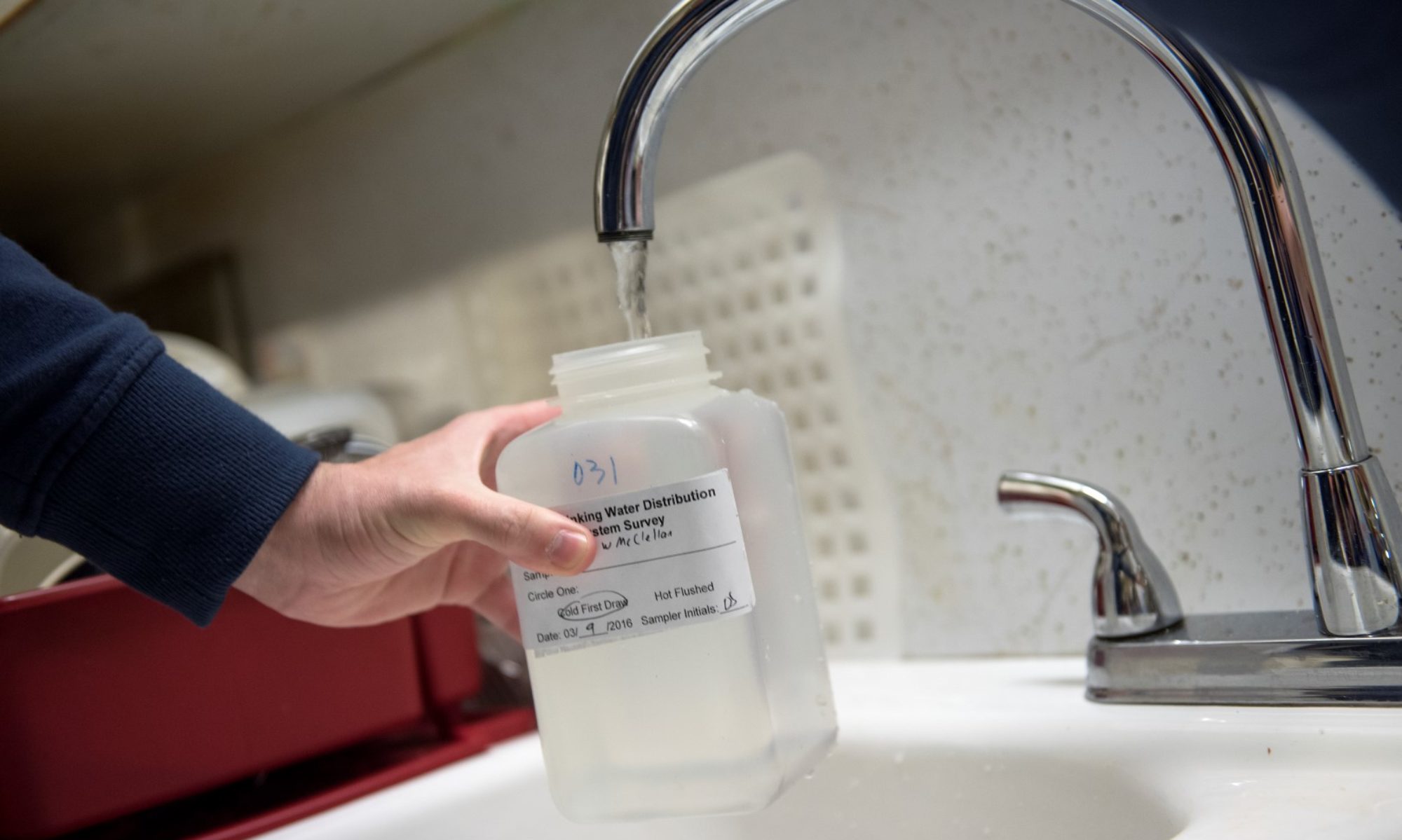Between April and June 2016, researchers from Virginia Tech provided 125 sampling kits to private well users in the Town of Orleans, New York, to test their drinking water quality for various inorganic parameters such as lead and copper. Subsequent laboratory-scale testing was conducted at Virginia Tech to evaluate metal leaching from four common plumbing materials when exposed to varying levels of road salt. The major goals of this study are to better understand the possible effects of road salt contamination (sodium chloride) on drinking water quality in private wells and corrosion of plumbing infrastructure. The following conclusions are based on a preliminary evaluation of the samples collected by Orleans residents and testing conducted at Virginia Tech.
Community wide sampling
Drinking water samples from 90 private wells (72% of potential 125) were analyzed at Virginia Tech. Information about excessive corrosion within household plumbing was assessed by letting the water sit stagnant for at least six hours and collecting the ‘first draw’ of water from the kitchen tap. Of the 90 homes sampled, 12% of first draw samples exceeded the US Environmental Protection Agency (US EPA) lead action level of 15 μg/L, with a 90th percentile lead level of 18 μg/L. Elevated levels of copper above the US EPA copper action level of 1.3 mg/L were also observed in 13% of first draw samples. Although the US EPA Lead and Copper Rule only applies to municipal water utilities and not to private wells, the observed levels of both lead and copper exceed EPA action levels.
After flushing for one minute, chloride concentrations were above the US EPA secondary aesthetic standard (for taste, odor, etc.) of 250 mg/L in 21% of water samples. The average chloride concentration was 179 mg/L among the 90 wells, with concentrations as high as 1,401 mg/L (5.6 times higher than the aesthetic standard). Overall, drinking water quality for some Orleans homes with private wells pose both aesthetic and health-based concerns. These concerns are affecting use of well water in the area– 66% of residents indicated that they do not drink their well water. The two primary reasons were bad taste or odor (45% of residents) and safety concerns or poor water quality (30% of residents). Most residents reported that they were drinking bottled water.
Our team is currently doing a spatial (mapping) analysis to understand the possible link between chlorides in well water and road salt. We analyzed the chloride levels in areas downstream of the salt barn and adjacent to a major intersection, for comparison to levels not impacted by road salt. Wells identified in the potential salt barn affected area had the highest median chloride of 230 mg/L and those adjacent to major intersection had a median level of 110 mg/L, while wells not affected by either had a median level of 20 mg/L. These findings are consistent with past reports that suggested road salt increased chloride concentrations in the groundwater in the Town of Orleans area.
Laboratory experiment of road salt
We conducted a laboratory experiment to examine the impact of increasing chloride levels on the corrosion of residents plumbing materials. Four plumbing materials were evaluated which included brass, galvanized iron, stainless steel, and lead solder. We observed that increasing chloride concentrations from 10 mg/L to 1000 mg/L increased the amount of metal leaching associated with galvanic corrosion (i.e., corrosion between dissimilar metals in direct contact). For example, the amount of lead leaching into the water from lead solder joints was 332 times higher when exposed to 1,000 mg/L chloride than to 10 mg/L after 2 weeks of exposure. When a single material was tested (e.g., brass, stainless steel), we observed that increasing chloride concentrations had a mixed impact on metal leaching. For instance, increasing chloride concentrations did not influence lead leaching from brass, but zinc leaching from brass was 1.5 times higher when chloride increased from 10 to 1000 mg/L after 2 weeks of exposure. These findings suggest that road salt contamination will accelerate corrosive attack on some plumbing components and pipes present in homes.
Lastly, thank you to all the residents that participated in this study!
